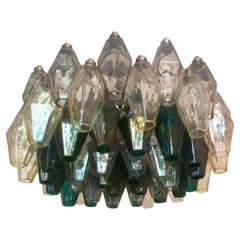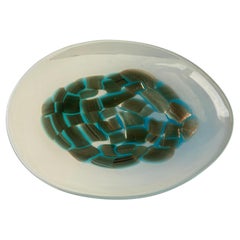Murano Glass
1950s Italian Space Age Vintage Murano Glass
Murano Glass, Opaline Glass
1950s Italian Mid-Century Modern Vintage Murano Glass
Glass, Murano Glass
1950s Italian Mid-Century Modern Vintage Murano Glass
Art Glass, Murano Glass
1950s Italian Mid-Century Modern Vintage Murano Glass
Blown Glass, Murano Glass, Opaline Glass
1950s Italian Mid-Century Modern Vintage Murano Glass
Murano Glass
1950s Italian Modern Vintage Murano Glass
Glass, Murano Glass
1950s Italian Mid-Century Modern Vintage Murano Glass
Murano Glass
1950s Italian Mid-Century Modern Vintage Murano Glass
Brass
1950s Italian Mid-Century Modern Vintage Murano Glass
Art Glass, Blown Glass, Murano Glass, Opaline Glass, Glass
1950s Italian Space Age Vintage Murano Glass
Murano Glass, Opaline Glass
1950s Italian Space Age Vintage Murano Glass
Opaline Glass, Murano Glass
1950s Italian Modern Vintage Murano Glass
Murano Glass
1950s Italian Mid-Century Modern Vintage Murano Glass
Glass, Art Glass, Blown Glass, Sommerso, Murano Glass
1950s Italian Mid-Century Modern Vintage Murano Glass
Murano Glass
1950s Italian Mid-Century Modern Vintage Murano Glass
Glass, Murano Glass
1950s Italian Other Vintage Murano Glass
Murano Glass
1950s Italian Mid-Century Modern Vintage Murano Glass
Murano Glass
1950s Italian Mid-Century Modern Vintage Murano Glass
Murano Glass
1950s Italian Mid-Century Modern Vintage Murano Glass
Murano Glass
1950s Italian Mid-Century Modern Vintage Murano Glass
Murano Glass
1950s Italian Mid-Century Modern Vintage Murano Glass
Glass, Art Glass, Sommerso, Murano Glass, Blown Glass
1950s Italian Space Age Vintage Murano Glass
Murano Glass, Opaline Glass
1950s Italian Mid-Century Modern Vintage Murano Glass
Murano Glass
1950s Italian Mid-Century Modern Vintage Murano Glass
Murano Glass
1950s Italian Space Age Vintage Murano Glass
Murano Glass, Opaline Glass
1950s Italian Mid-Century Modern Vintage Murano Glass
Murano Glass, Opaline Glass
1950s Italian Mid-Century Modern Vintage Murano Glass
Murano Glass
1950s Italian Mid-Century Modern Vintage Murano Glass
Murano Glass
1950s Italian Mid-Century Modern Vintage Murano Glass
Glass, Art Glass, Blown Glass, Murano Glass
1950s Italian Mid-Century Modern Vintage Murano Glass
Art Glass, Blown Glass, Murano Glass
1950s Italian Mid-Century Modern Vintage Murano Glass
Murano Glass
1950s Italian Mid-Century Modern Vintage Murano Glass
Murano Glass
1950s Italian Vintage Murano Glass
Murano Glass
1950s Italian Mid-Century Modern Vintage Murano Glass
Glass, Art Glass, Murano Glass, Blown Glass
1950s Italian Mid-Century Modern Vintage Murano Glass
Art Glass, Blown Glass, Murano Glass
1950s Italian Other Vintage Murano Glass
Murano Glass
1950s Italian Modern Vintage Murano Glass
Murano Glass, Glass
1950s Italian Mid-Century Modern Vintage Murano Glass
Murano Glass
1950s Vintage Murano Glass
Murano Glass
1950s Italian Mid-Century Modern Vintage Murano Glass
Murano Glass
1950s Italian Mid-Century Modern Vintage Murano Glass
Murano Glass
1950s Italian Mid-Century Modern Vintage Murano Glass
Gold Leaf
1950s Italian Mid-Century Modern Vintage Murano Glass
Art Glass, Blown Glass, Murano Glass, Opaline Glass, Glass
1950s Italian Mid-Century Modern Vintage Murano Glass
Silver Leaf
1950s Italian Vintage Murano Glass
Murano Glass
1950s Italian Mid-Century Modern Vintage Murano Glass
Murano Glass
1950s Italian Mid-Century Modern Vintage Murano Glass
Murano Glass
1950s Italian Mid-Century Modern Vintage Murano Glass
Gold Leaf
1950s Italian Mid-Century Modern Vintage Murano Glass
Murano Glass
1950s Italian Other Vintage Murano Glass
Murano Glass
1950s Italian Mid-Century Modern Vintage Murano Glass
Gold Leaf
1950s Italian Mid-Century Modern Vintage Murano Glass
Murano Glass
1950s Italian Other Vintage Murano Glass
Murano Glass
1950s Italian Mid-Century Modern Vintage Murano Glass
Gold Leaf
1950s Italian Mid-Century Modern Vintage Murano Glass
Foil
1950s Italian Other Vintage Murano Glass
Murano Glass
1950s Italian Mid-Century Modern Vintage Murano Glass
Gold Leaf
1950s Italian Modern Vintage Murano Glass
Murano Glass
Read More
Ready for a Cinderella Moment? This Glass Handbag Is a Perfect Fit
Glass slippers might be the stuff of fairytales, but glass handbags? Artist Joshua Raiffe has made them a reality, and they're far less delicate than you might imagine, but just as dreamy.
100 Works That Remind Us Why Glass Can Be a Radical Art Form
A new show at Upstate New York’s Corning Museum of Glass shows off the best and brightest contemporary works of the last few years.




